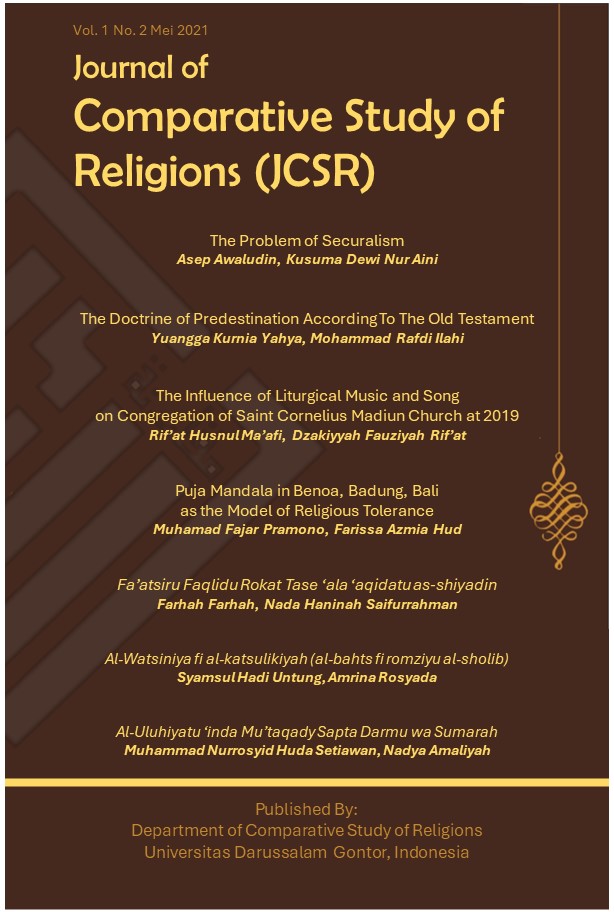Fa’atsiru Faqlidu Rokat Tase ‘ala ‘aqidatu as-shiyadin
DOI:
https://doi.org/10.21111/jcsr.v1i2.6384Keywords:
Tradition, Rokat Tase’, Akidah, Fisherman, WesternAbstract
Rokat Tase’ is a tradition or ancestral heritage that is still preserved by coastalcommunities, especially fishermen. In its implementation, several rituals havebecome their beliefs which have a major influence on the faith of the local community.One of the rituals in this tradition is Larung Sesaji. This ritual is also one of the relicsof the teachings of Hinduism, which is still preserved by the ancestors to date,leaving an impact on the fishermen. This article will discuss the implementation ofRokat Tase ‘in Pakandangan Barat village, Sumenep Madura and its influence onfishermen. Rituals in Rokat Tase’ begin with khatam al-Quran and continue withistighasah, tahlilan, Larung Sesaji that are paraded to the sea in a boat. The a Sesajenwere dissolved in the form of food and goods placed in a small boat called Bithek.This ritual is not following the teachings of Islam. Besides that, there is also an artperformance and ends with tabligh akbar. Rokat Tase’s implementation affects thefaith of the fishermen in Pakandangan Barat village, Sumenep, Madura.Downloads
Published
2021-04-01
How to Cite
Farhah, F., & Saifurrahman*, N. H. (2021). Fa’atsiru Faqlidu Rokat Tase ‘ala ‘aqidatu as-shiyadin. Journal of Comparative Study of Religions, 1(2). https://doi.org/10.21111/jcsr.v1i2.6384
Issue
Section
Articles
License
The author whose published manuscript approved the following provisions:Â
The right of publication of all material published in the journal / published in the JCSR is held by the editorial board with the knowledge of the author (moral rights remain the author of the script).
The formal legal provisions for access to digital articles of this electronic journal are subject to the terms of the Creative Commons Attribution-NonCommercial-ShareAlike 4.0 International License (CC BY-NC-SA 4.0), which means that JCSR reserves the right to save, transmit media or format, Database), maintain, and publish articles without requesting permission from the Author as long as it keeps the Author's name as the owner of Copyright.
Printed and electronic published manuscripts are open access for educational, research and library purposes. In addition to these objectives, the editorial board shall not be liable for violations of copyright law.




2.png)
